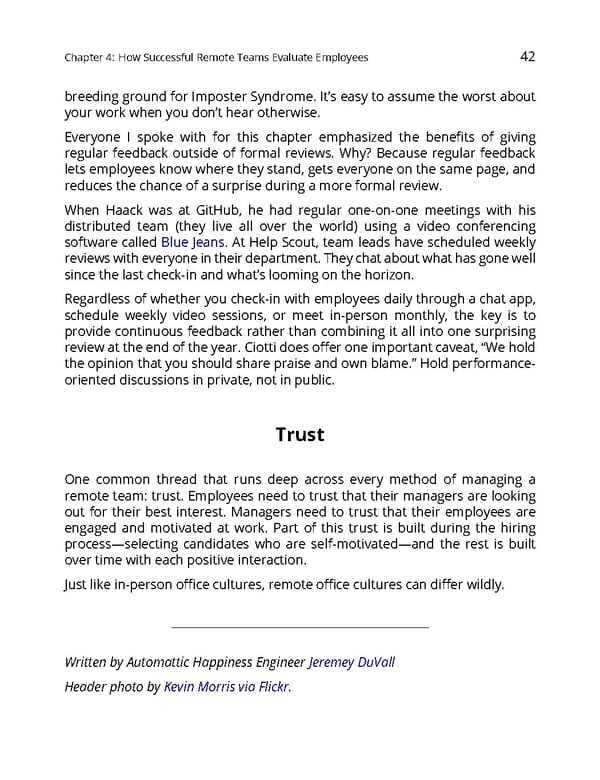Chapter4: HowSuccessfulRemoteTeamsEvaluateEmployees 42 breeding ground for Imposter Syndrome. It’s easy to assume the worst about yourworkwhenyoudon’thearotherwise. Everyone I spoke with for this chapter emphasized the benefits of giving regular feedback outside of formal reviews. Why? Because regular feedback lets employees know where they stand, gets everyone on the same page, and reducesthechanceofasurpriseduringamoreformalreview. When Haack was at GitHub, he had regular one-on-one meetings with his distributed team (they live all over the world) using a video conferencing software called Blue Jeans. At Help Scout, team leads have scheduled weekly reviewswitheveryoneintheirdepartment.Theychataboutwhathasgonewell since the last check-in and what’s looming on the horizon. Regardless of whether you check-in with employees daily through a chat app, schedule weekly video sessions, or meet in-person monthly, the key is to provide continuous feedback rather than combining it all into one surprising reviewattheendoftheyear.Ciottidoesofferoneimportantcaveat,“Wehold the opinion that you should share praise and own blame.” Hold performance- oriented discussions in private, not in public. Trust One common thread that runs deep across every method of managing a remote team: trust. Employees need to trust that their managers are looking out for their best interest. Managers need to trust that their employees are engaged and motivated at work. Part of this trust is built during the hiring process—selecting candidates who are self-motivated—and the rest is built overtimewitheachpositiveinteraction. Just like in-person office cultures, remote office cultures can differ wildly. Written by Automattic Happiness Engineer Jeremey DuVall HeaderphotobyKevinMorrisviaFlickr.
 The Ultimate Guide to Remote Work Page 45 Page 47
The Ultimate Guide to Remote Work Page 45 Page 47